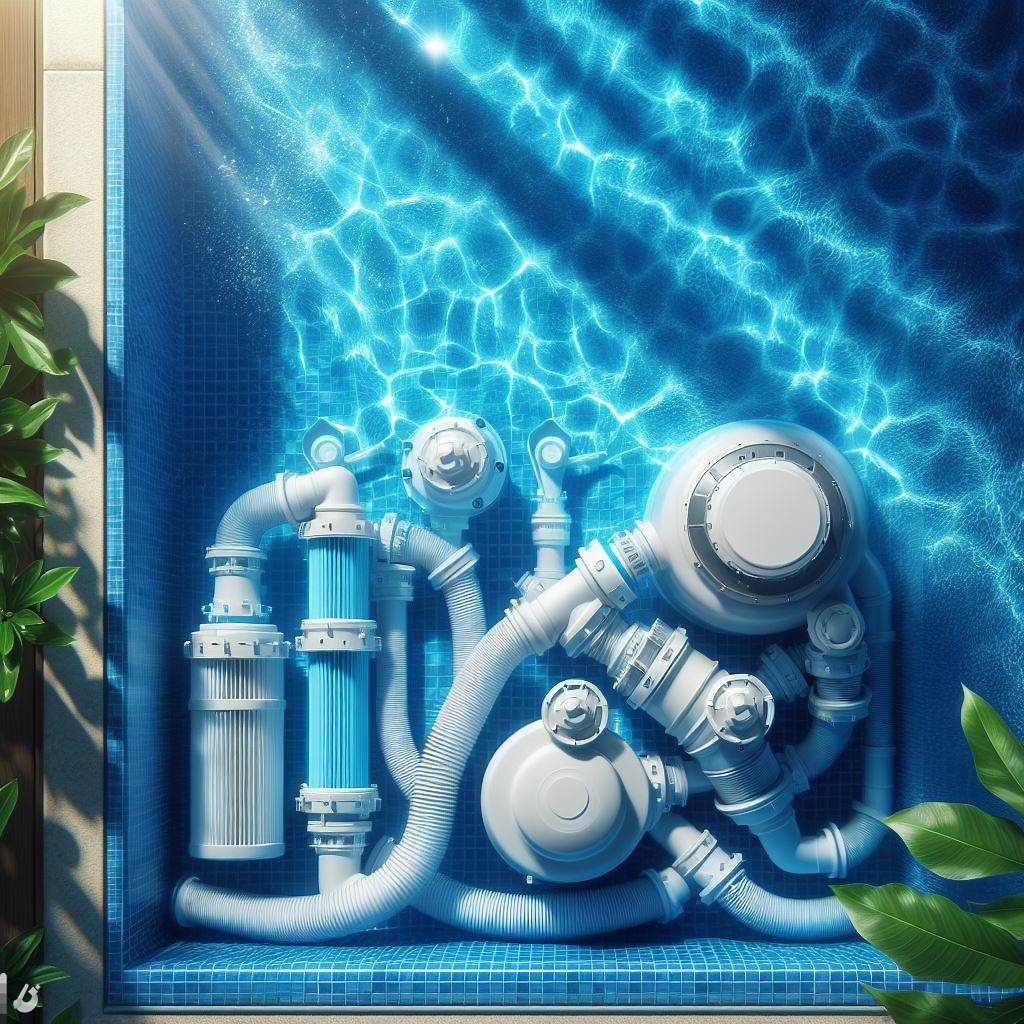Pool sand filters are a common and effective method for maintaining water clarity and cleanliness in swimming pools. However, despite their efficiency, sand filter media can become a breeding ground for bacteria if not properly maintained. In this article, we will delve into the factors contributing to bacterial growth in pool sand filter media, the potential risks associated with bacterial contamination, and strategies for preventing and mitigating bacterial proliferation to ensure safe and sanitary pool water.

Understanding Pool Sand Filters
Pool sand filters are a popular choice for pool owners due to their simplicity and effectiveness in removing impurities from pool water. These filters consist of a tank filled with specially graded sand as the filtration media. As water flows through the sand bed, suspended particles, debris, and contaminants are trapped, while clean water is returned to the pool.
Factors Contributing to Bacterial Growth
Despite their filtration capabilities, pool sand filters can become conducive environments for bacterial growth under certain conditions. Several factors contribute to the proliferation of bacteria in sand filter media:
Organic Matter Accumulation
Over time, organic matter such as leaves, pollen, sunscreen residues, and body oils can accumulate in the sand filter media. These organic substances provide nutrients for bacteria to thrive and multiply.
Inadequate Backwashing
Insufficient or infrequent backwashing of sand filters can lead to the buildup of trapped debris and organic matter within the sand bed. This stagnant environment creates ideal conditions for bacterial growth and biofilm formation.
Low Flow Rates
Inadequate water flow through the sand filter can result in poor filtration and ineffective removal of impurities. Low flow rates allow debris and organic matter to remain trapped in the sand bed, promoting bacterial colonization and proliferation.
Warm Water Temperatures
Elevated water temperatures, especially in outdoor pools exposed to sunlight, can promote bacterial growth in sand filter media. Warmer water temperatures create a more favorable environment for bacterial metabolism and reproduction.
Health Risks of Bacterial Contamination
Bacterial growth in pool sand filter media poses potential health risks to swimmers and pool users. Contaminated pool water can harbor pathogenic bacteria such as E. coli, Pseudomonas aeruginosa, and Legionella pneumophila, which can cause various waterborne illnesses and infections, including:
Gastrointestinal Infections
Ingestion of water contaminated with fecal bacteria such as E. coli can lead to gastrointestinal infections, resulting in symptoms such as diarrhea, abdominal cramps, nausea, and vomiting.
Skin Infections
Exposure to waterborne pathogens such as Pseudomonas aeruginosa can cause skin infections, including folliculitis (hot tub rash) and swimmer’s itch. Symptoms may include redness, itching, rash, and inflammation of the skin.
Respiratory Infections
Inhalation of aerosolized water contaminated with Legionella pneumophila, a bacteria responsible for Legionnaires’ disease, can lead to respiratory infections, pneumonia, and potentially severe respiratory illness, particularly in immunocompromised individuals.
Preventive Measures and Mitigation Strategies
To prevent and mitigate bacterial growth in pool sand filter media, several preventive measures and mitigation strategies can be implemented:
Regular Backwashing
Schedule regular backwashing of pool sand filters to remove trapped debris, organic matter, and bacterial biofilm from the sand bed. Backwashing helps maintain optimal filtration efficiency and prevents bacterial proliferation.
Periodic Sand Replacement
Periodically replace the sand filter media to prevent the accumulation of organic matter and bacteria within the sand bed. Follow manufacturer recommendations for sand replacement intervals based on filter size and usage.
Optimized Filtration Settings
Ensure proper filtration settings and adequate flow rates to optimize filtration efficiency and prevent debris buildup in the sand filter. Adjust filtration settings based on pool usage, water quality, and environmental conditions.
Chemical Treatment
Supplement pool maintenance with appropriate chemical treatments to control bacterial growth and maintain water quality. Use disinfectants such as chlorine or bromine to sanitize pool water and inhibit bacterial proliferation.
Regular Maintenance
Implement a comprehensive pool maintenance routine, including skimming, vacuuming, and surface cleaning, to remove debris and organic matter from the pool water before it enters the sand filter. Regular maintenance helps minimize the input of contaminants into the filtration system.
Water Testing
Conduct regular water testing to monitor pool water chemistry and bacterial levels. Test for bacterial indicators such as total coliforms and heterotrophic plate count (HPC) to assess water quality and identify potential bacterial contamination.
Conclusion
In conclusion, bacterial growth in pool sand filter media poses significant risks to the safety and health of swimmers and pool users. Without proper maintenance and preventive measures, sand filters can become breeding grounds for pathogenic bacteria, leading to waterborne illnesses and infections. By understanding the factors contributing to bacterial proliferation and implementing proactive strategies for prevention and mitigation, pool owners and operators can ensure safe and sanitary pool water for all. Regular backwashing, periodic sand replacement, optimized filtration settings, chemical treatment, regular maintenance, and water testing are essential components of an effective pool maintenance regimen aimed at controlling bacterial contamination in pool sand filters and promoting a healthy swimming environment.
